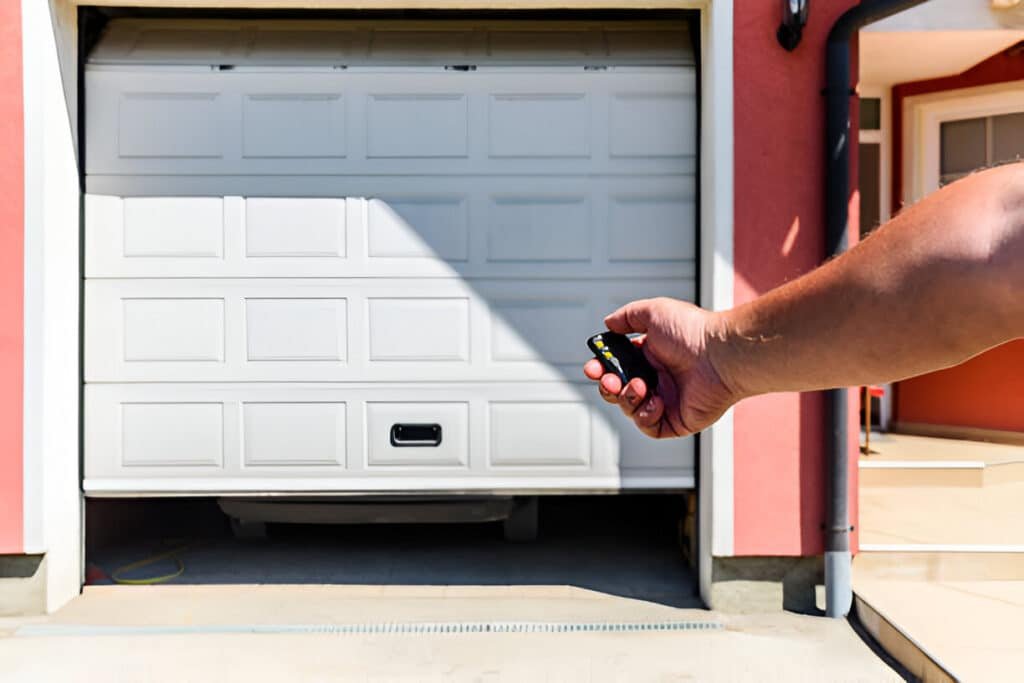Upgrading to a new garage door enhances your home’s security, curb appeal, and functionality. Whether you’re replacing a worn-out door or adding one for the first time, understanding the installation process helps you prepare and stay informed. Here’s a detailed breakdown of everything that happens before, during, and after professionals install your garage door.
Pre‑Installation Consultation & Assessment
Professional installers begin the process with a comprehensive in-home assessment. They carefully measure the garage opening—its width, height, headroom, and backroom—to ensure the new door fits correctly. They evaluate the frame, tracks, springs, and overall structural integrity to identify any repairs that might be needed before installation. During this visit, you’ll discuss design preferences including materials like steel, wood, or aluminum, insulation levels for energy efficiency, panel styles, and finishes. The installer also provides you with a detailed quote and timeline covering parts, labor, and any optional opener installation. This is the right moment to ask questions about warranties, energy-efficiency options, smart controls, and other advanced safety features. While insulated and smart garage doors cost more upfront, they often deliver long-term comfort, security, and convenience.
Scheduling & Pre‑Job Preparation
Once you approve the quote, the installer schedules an installation date. Before the crew arrives, homeowners need to prepare the space. This includes clearing the garage of vehicles, tools, storage bins, or any flammable materials to make sure installers have plenty of room to work safely and move equipment easily. You should also clear outdoor paths to the garage, removing any snow, ice, or standing water to prevent slips and allow easy transport of heavy panels and tools. On installation day, make sure children and pets stay safely away from the work area, since the process involves tools, ladders, and components under tension.
Old Door Removal
On installation day, professionals begin by removing the old door. They disconnect power to the opener and carefully detach springs, cables, tracks, and panels, taking precautions to avoid injuries from high-tension springs. Once the old door is removed, they inspect the frame and header for signs of rot, damage, or misalignment. If repairs are necessary, they handle those adjustments to ensure the new door has a secure and level base. They dispose of or recycle the old door and hardware responsibly, leaving you free from the hassle of dealing with the waste. Depending on the complexity of the existing setup, removing the old door generally takes between 30 minutes to an hour.
Installing the New Door & Hardware
With the old door gone, installers turn to assembling and mounting the new system. For sectional doors, they begin by assembling the panels in sequence, checking for alignment at every stage. They install vertical tracks, making sure they’re perfectly level, then secure the horizontal tracks to ensure the door travels smoothly. Springs—either torsion or extension—are mounted and tensioned precisely according to manufacturer specifications to ensure safe, balanced operation. Technicians also install hinges, rollers, cables, and brackets, applying the correct torque and ensuring each part is securely in place. Throughout the process, installers use protective gear and follow strict safety protocols, because garage door springs and panels can be dangerous if mishandled.
Opener Installation (If Included)
If you’ve chosen to include an automatic opener with your new door, the technicians will install that system next. They mount the motor unit and connect it to the torsion shaft or header, depending on whether it’s a chain, belt, screw-drive, or wall-mounted jackshaft opener. They wire the opener into your electrical supply, ensuring all connections are safe and compliant with local codes. Once the motor is installed, they attach and program remote controls and any wall-mounted keypads. They also integrate safety features such as auto-reverse sensors and force-limit settings to prevent accidents and meet modern safety standards. This part of the process ensures your garage door is not only convenient but also secure for daily use.
Final Adjustments & Testing
With the mechanical assembly complete, installers focus on fine-tuning the system. They manually lift the door to check its balance—a well-balanced door should stay in place when opened halfway. Installers adjust the tracks for smooth travel, set spring tension precisely, and tighten all bolts and brackets to prevent loosening during operation. If an opener is installed, they calibrate its force and limit settings to ensure it opens and closes smoothly without straining the motor. They also test safety features rigorously, using objects to verify that the door reverses when it encounters an obstacle. Technicians typically cycle the door multiple times to confirm everything operates quietly and reliably, catching any issues before they leave.
Cleanup & Responsible Disposal
After installation and testing, the crew cleans up the workspace thoroughly. They remove any debris, packaging, and old parts, leaving your garage neat and usable. Metal components such as old tracks and springs are often recycled in keeping with environmental best practices. When they finish, you’ll find your garage free of hazards and ready for immediate use.
Customer Walkthrough & Education
Before leaving, installers walk you through the operation of your new door and opener. They show you how to open and close it manually in case of power outages, use the remote controls and keypads, and engage or release the locking mechanisms. They explain the safety features, like auto-reverse sensors and emergency release cords, ensuring you know exactly how to use them. Technicians also offer maintenance tips, such as lubricating rollers and springs regularly, checking and tightening hardware, cleaning tracks, and testing the safety reversal feature a few times each year. Finally, they review the warranty coverage so you know what is protected and how to make a claim if needed. This personalized instruction empowers homeowners to keep their new garage door in top condition for years.
Post‑Installation Maintenance & Care
Maintaining your garage door is simple but essential for long life and reliable performance. Inspect it monthly for signs of wear or rust. Lubricate the rollers, hinges, and springs every six months to reduce friction and noise. Tighten any loose bolts or hardware to keep the door operating smoothly despite vibration from regular use. Cleaning the tracks regularly helps prevent debris from interfering with travel. Testing the safety reversal mechanism every few months ensures that the door will stop and reverse if it hits an object, protecting people, pets, and property. In colder climates or if you use the garage as a workshop, investing in extra insulation can save energy and improve comfort. With routine care, a high-quality garage door can last anywhere from 15 to 30 years, protecting your home and delivering convenience daily.
Typical Timeline & Investment
Most professional garage door installations take between three and six hours, depending on the complexity of the door and whether an opener is included. The process begins with a brief pre-installation assessment, often 30 minutes to an hour. The main installation generally takes two to four hours, followed by a final walkthrough of about 30 minutes to ensure everything is correct and that you understand how to use your new system. Costs vary widely. A basic single-panel or standard roll-up door might cost under $1,000 before installation. Insulated, sectional, or custom-finished doors cost more, with total professional installation (including labor) often running from several hundred to a couple of thousand dollars depending on the options you choose.
DIY vs. Professional Installation
While it might be tempting to save money by installing a garage door yourself, professional installation is strongly recommended. Garage doors and their springs operate under high tension and can cause serious injury if mishandled. Professionals bring the specialized tools and experience needed to ensure your door is perfectly balanced, correctly aligned, and safe to operate. A professional job also protects your warranty, ensures the system meets code, and provides peace of mind that your investment will deliver reliable, long-term performance. Though simpler manual doors can sometimes be installed by handy homeowners, most people prefer to trust the process to skilled technicians.
Conclusion
A professional garage door installation is a well-planned process that typically runs like clockwork. It begins with a detailed assessment and planning phase, followed by efficient removal of the old door, precise installation of new components, optional opener setup, rigorous testing, and thorough cleanup. Installers also provide a helpful walkthrough so you know exactly how to operate and maintain your new door. While the whole job generally takes about half a day, the result is a safer, more convenient, and more attractive entrance that adds real value to your home for years to come.







